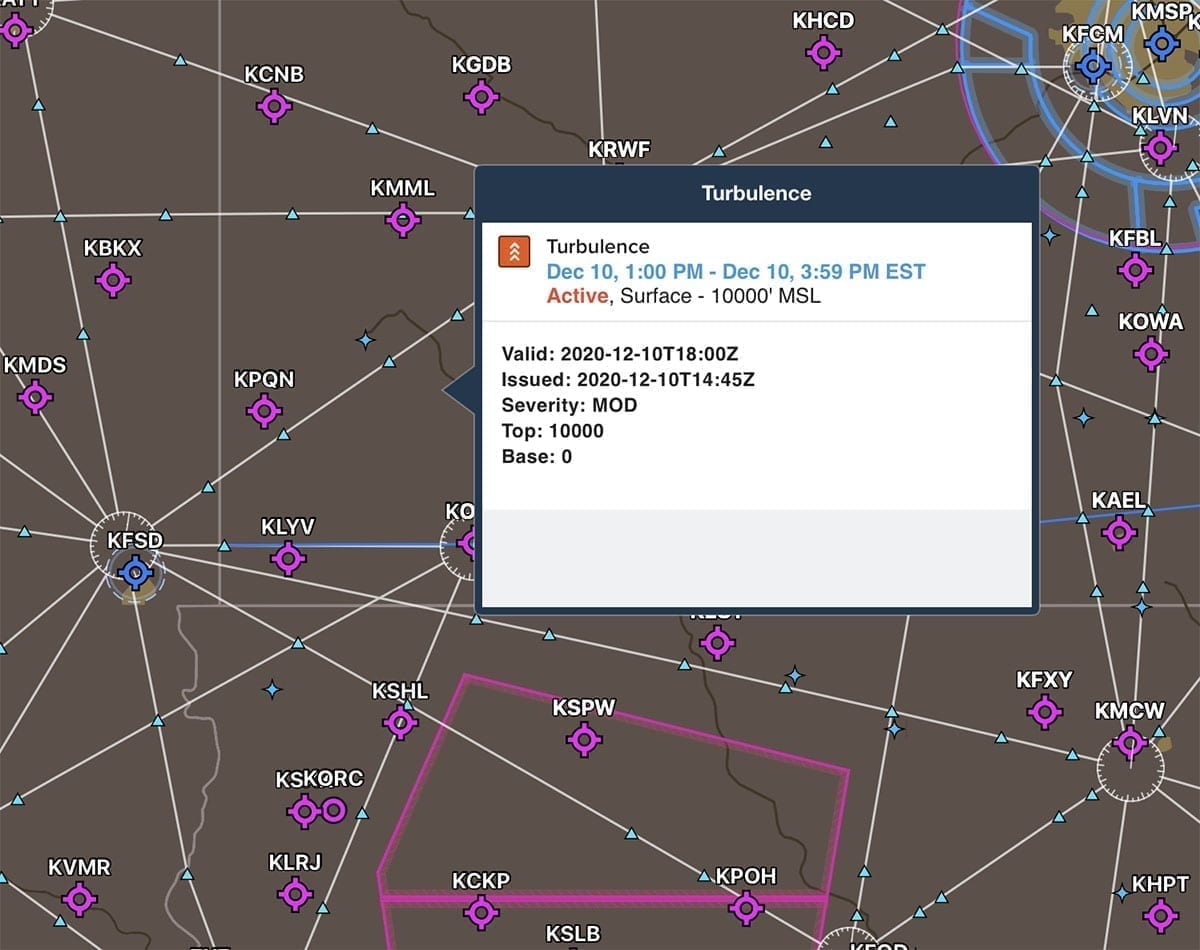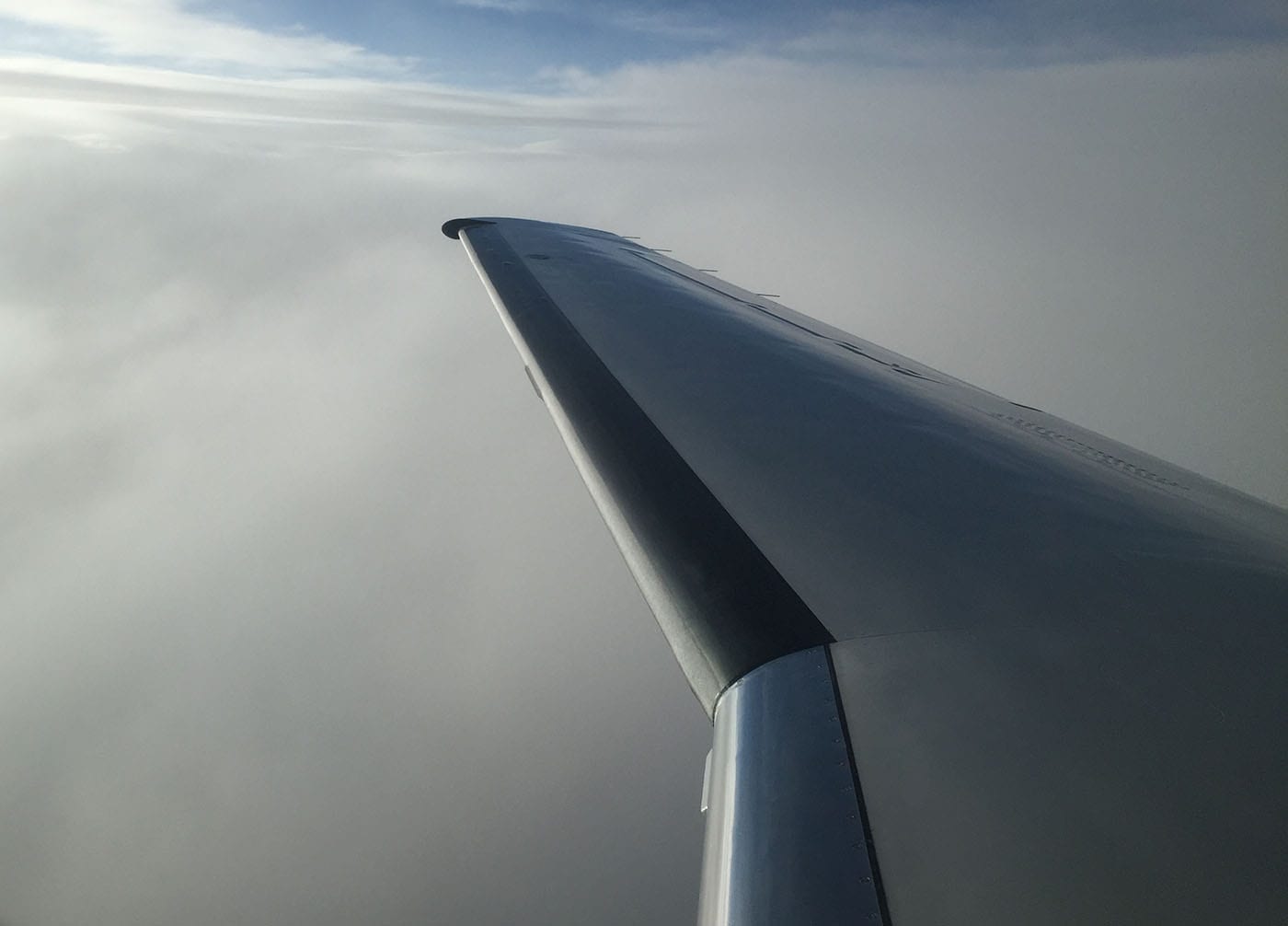
Friday photo: above the thermal layer
Friday PhotoCruising along at 8500 feet in his Tecnam P2008, Mike Hackney captured this beautiful and slightly strange photo. As he says, "The optical illusion was of a lake covered by a sheet of ice, and the cloud tops emerging. This went on for an hour of flight time. Simply beautiful."

A Christmas gift to myself
Christmas specialIt’s Christmas morning and I rise early, not to play Santa to my children, for they are long grown. Today I rise early to gift myself. I’m careful not to wake my wife, warm and snuggled under the covers. She has no interest in this thing that I go to do.

The day it snowed in Vietnam: a true story
Christmas specialCarols played in the mess hall and the calendar read "December 24, 1969," but it didn't feel like Christmas Eve. We were tired from a long day of flying many missions picking up infantrymen and recon patrols from field locations, bringing them back to the big airfield at Phan Thiet for the Christmas cease-fire. Soldiers on both sides of this war were glad to allow the cease-fire to start one day early.

An engineering approach to the impossible turn
TechniqueThe FAA’s official recommendation on losing power after takeoff is to proceed straight ahead and not to attempt to return to the runway or airport. That existing policy position by the FAA assumes there is an open area available for a successful touchdown. The second assumption is that pilot skill level is not sufficient to execute a 180-degree turn in order to return to landing without stalling and spinning in. Both positions are not much help.

Journey to the End of the Earth
My AdventureCall it a post-midlife crisis. Call it my bucket list. Call it absurd. Call it expensive. OK, I plead guilty to all of the above. I decided to go anyway. I was determined to fly my 1977 Piper Arrow from my home field (KEQY) near Charlotte, North Carolina, to the northernmost airfield in North America—at PABR in Utqiagvik (formerly known as Barrow), Alaska.

Friday Photo: Dominican Republic from a TBM
Friday PhotoThe view from the cockpit of a TBM 910 as it cruises along in the flight levels is usually pretty good, but sometimes it's great. Omar Haedo captured one of these unique views as he flew home to Miami, with the sun reflecting off the Caribbean Sea and the cumulus clouds building over the Dominican Republic.

Pitch black landing in Vietnam
I was thereI asked ALCC if they had any runway lighting. They stated that that field did not have any lighting. I told ALCC to stand by. I got out my list for the artillery units for that location, called the first unit and asked if they had any parachute flares. They responded that they did, and I asked them to pop one.

Bratburger-itis: a memorable trip
I Can't Believe I Did ThatAll week long, the weather was looking good. When I called for my flight weather briefing Friday morning (note this is before the common use of internet weather), the briefer mentioned the potential for moderate turbulence and potential for gusty winds. The velocity of the winds he forecast was less than what I had comfortably handled before so I wasn’t concerned. And, after all, I had a whole two years of flying under my belt!

Go or No Go: above or below the clouds?
Go or No GoYou earned your instrument rating years ago, but you haven't been current in a long time. Now you're kicking yourself for that lapse in currency, because your VFR-only limitation is going to make an easy IFR flight into a marginal VFR flight. You're hoping to fly your 1972 Cessna 182 from your home in Middletown, Ohio (MWO), to Marion, Illinois (MWA). Will the weather cooperate?

Is that airframe icing or snow?
Weather GeekYou're flying in visible moisture with the air temperature below freezing and you notice something building up on the leading edge of the wings. Is that airframe icing? What you see collecting on the wing leading edges in a cold cloud could be airframe icing, or it could be snow. Icing is bad, maybe very bad, but snow isn’t much of a problem. How do you know the difference?

Friday photo: Airbus X3
Friday PhotoThe X3 was unusual from many different perspectives, not the least of which being the addition of a pair of stub wings with tractor propellers at their tips. The propellers, though appearing to have their own powerplants, were actually driven by the engines that drove the main rotor.

Always bring a flashlight
I was thereNovember is the time of year in the Midwest that can bring beautiful crisp late fall days, or it can bring fog, snow, ice, and a freezing rain chilling to the soul. In late November of 1981 I had a flight that encountered almost all of those that mother nature could provide.

Understanding Vb: turbulence penetration speed
TechniqueIt should be clear that when expecting/encountering turbulence, that pilots should fly a speed that is slower than Va by at least the value of the maximum gust—airspeed gain—they expect to encounter, and higher than Vs1 by the same value for potential airspeed loss. Va is simply too fast!

A lucky pilot: flying celebrities around the world in a Gulfstream
I was thereScottsdale operations called: “I have scheduled you on a ten-day South American tour with Elton John starting on the 17th. Find another captain to go with you. Elton’s agent wants an additional pilot besides Ernie... he wants to see two people with some white hair in the cockpit.”

Flying with Malik: why the newest generation of pilots will be great
I was thereMalik now has the distinction of being the youngest black person in the world to have received a B-777 type rating. That’s only fitting, because most people think I’m about 60. I now have the distinction of being the oldest person in the world to have received a B-777 type rating, at 74. But neither of us knew this until after we had completed our training.

Friday Photo: storm over the Everglades
Friday PhotoThe Pipistrel Sinus motorglider is all about fun flying, and that's what Todd Tracy captures in this Friday Photo. His wingtip-mounted GoPro camera shows him soaring over the Everglades in Florida, with a typical summertime rain shower making itself known in the background.

Engine failure at 150 feet, with a glider in tow
I was thereI was towing and we were taking a passenger on a ride. As I recall the ride was a very attractive young lady so there were many volunteers among the commercial pilots, but it was Joni Whitten’s turn and she was not relinquishing that turn. The flight was normal until we were at about 150 feet over the woods at the south end of the runway, when the engine quit.

Back in the Saddle on a Very Different Horse
I was thereAnd then she said it: “why don’t you fly anymore?” My response was simple: “I don’t know.” Suddenly, I had a flying club membership application in my hand—I was going to get my ASEL (I didn’t know what that was, just that was what I was going to get). There I was, a Commercial, Instrument-rated helicopter pilot, learning to land an airplane

From FUBAR to fabulous: landing at 200 strips in three months
My AdventureIf you do a search for 2020 memes, there is no shortage of graphic illustrations why this year has been FUBAR (look it up if you don't understand) for travellers, especially those of us who prefer to journey by air. And yet, I managed to have my best flying season ever in 2020 while travel was restricted to my home province of Manitoba!

Ice bridging: the myth that won’t die
TechniqueIce bridging is the idea that if you operate the boots too early, you will stretch the ice but not fracture it. When the boot deflates following the cycle, the stretched ice will remain, with more ice building on top of it. Yet there is not a single test conducted in anyone’s icing research wind tunnel that has been able to replicate ice bridging, nor are there any accidents that document ice bridging as a cause or contributory factor.
